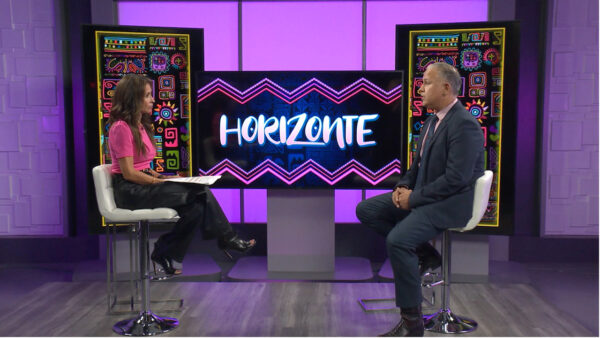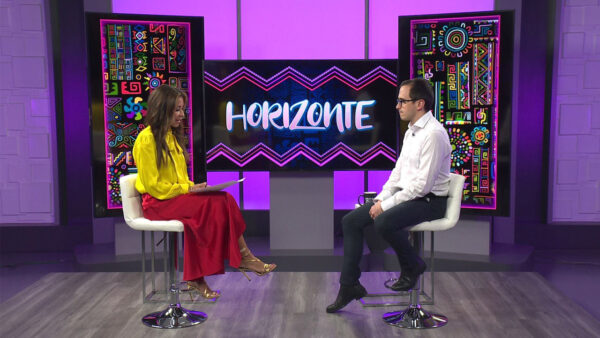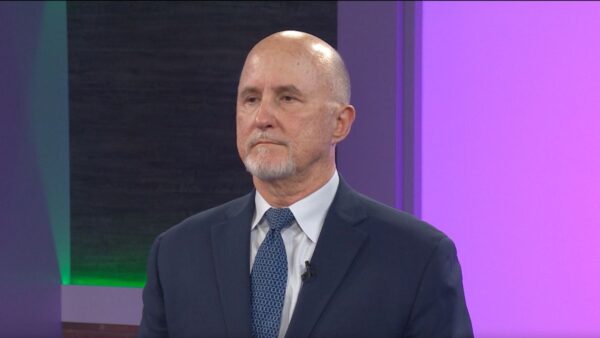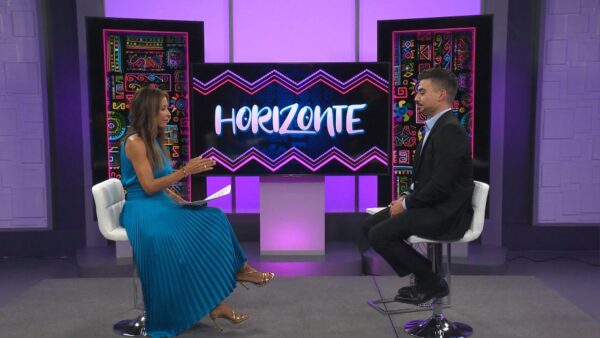A report from the Annie E. Casey Foundation explores kids, race and opportunity. “Race for Results: Building a Path to Opportunity for All Children” compares how children are progressing on key milestones across ethnic and racial groups at the state and national level. Children’s Action Alliance President and CEO Dana Wolfe Naimark and Joe Garcia, a member of the Alliance’s board of directors and director of the ASU Morrison Institute Latino Public Policy Center talk about the report.
José Cárdenas: Good evening, I'm José Cárdenas. Did you know children are progressing differently when it comes to key milestones in life? We'll talk about our new report exploring kids, race, and opportunity. And an ASU student is here to talk about her research studying undocumented youth. Plus an ASU history professor will talk about what happened to the summit addressing black and latino relations. Thank you for joining us. A report from the Annie E. Casey Foundation explores kids, race, and opportunity. Race for results building a path to opportunity for all children compares how children are progressing on key milestones across ethnic and racial groups at the state and national level. Here to talk about this report are Children's Action Alliance president and CEO Dana Wolfe Naimark, and Joe Garcia, member of the Children's Action Alliance board of directors and director of the ASU Morrison Institute latino public policy center. Thank you both for being on "Horizonte" to talk about this topic. We've talked about it before, things don't look any better than they have in the past, maybe even worse. Dana give us a summary of the casey report.
Dana Wolfe Naimark: The Annie E. Casey Foundation puts out the kids count rankings every year that ranks states on conditions for kids. And Arizona for a long time has been in the bottom 10. And this report now breaks out the data even further, looking at kids in different racial and ethnic groups. So in the context of kids in Arizona being behind, latino children and American Indian children have even more barriers to success that they're facing.
José Cárdenas: As compare ourselves to the rest of the nation, we're about the worst near the bottom in both categories.
Dana Wolfe Naimark: We are in the bottom seven or eight certainly for latino children. And these are indicators that each stage of life for success, they don't guarantee success or failure, but we know if the conditions are piled up against you, it's very hard to succeed and break out of that.
José Cárdenas: Joe, as I indicated when we started this interview, this is not new news. Especially to the Morrison Institute, with your report of just a few years ago.
Joe Garcia: Yeah. I think what you're seeing are the many report saying the same thing. Drop, which you've talked about, and another report talked again about latino education gap being a key factor in whether or not a latino kid can succeed. It goes beyond that. There's an economic case, understanding that the work force coming up, younger latinos coming up, we have to decide, gee, we're lucky we have a very great population attribute there that can fill the gap that's being left by largely white population, baby boomers moving into retirement. So we have a work force in place, it just depends are we going to have a well-paid, highly skilled, highly educated work force, or drop to a second or 3rd-tier state with people taking out of the system rather than putting into the system.
José Cárdenas: Some people would say based on results like this we already are a second or third-tier state, at least when it comes to educating our children. Before we get much more into the significance of the results, tell us more about what it is the Annie E. Casey Foundation was measuring.
Dana Wolfe Naimark: Sure. They picked indicators which again are milestones that at each stage of life. They're indicators such as low birth weight, indicators such participation in preschool for three and four and 5-year-old children, reading and math scores and elementary school, high school graduation, and poverty. So family income is an indicator, but also your neighborhood income level. Because we know children who live in areas of concentrated poverty have barrier upon barrier in front of them that makes it hard to break out of that.
José Cárdenas: And the number as I recall for the latino population was 456 on a scale of 1000.
Joe Garcia: 356.
José Cárdenas: 356 on a scale of a thousand.
Dana Wolfe Naimark: Correct.
José Cárdenas: Even worse for American Indians.
Dana Wolfe Naimark: Yes. American Indians were a score of 282, a very frightening, and again, all of these children are the work force of the future. Our leaders of the future. They're going to be taking care of us in our old age. So we need to pay attention to the conditions for all kids in Arizona.
José Cárdenas: Joe, what can we do? Is there anything in the report that offers guidance about how you remedy this situation?
Joe Garcia: Obviously everyone has a distinct role. Business has a role, education has a role, parents have a role. But I think we need to change the way we look at latino children today. And understand we're talking about Arizonans. These are U.S. citizens that are coming out of future leaders, future work force, and we need to almost remove the latino word from the equation and put Arizonans. Because we're talking about the larger predominant population coming up, we're talking about Arizona's future. We're talking about the ability to compete as a state. So we need to look at it as a racial issue, as we need to look at it as these are Arizonans that represent us, they look like us. They are us. They are Arizonans.
José Cárdenas: Yet people will look at the numbers and say it doesn't present a fair picture of Arizona because we're a border state, we have a large immigrant population, a large population that's monolingual Spanish, how do you respond to that?
Joe Garcia: I think the face of Arizona is changing. It's going to be browner. We have to live with that. Many people go to tanning booths to look browner. Apparently brown isn't necessarily a bad thing. I think we need to look at this as an opportunity, it is a crisis, there is no doubt, but there's an opportunity for our state to truly take the great state, but we have to invest. I'm surprised at someone who says they're against welfare, but they're looking to cut education as well. You can't have it both ways. If you're against welfare, you should invest heavily in education. Because that's the playoff of each other.
José Cárdenas: And in talking about investing in education, that's an issue being debated right now at the capitol on the budget, more money is going into education, not as much as people advocates are asking for.
Dana Wolfe Naimark: A little bit more money is going into education if you compare it to very low base from having cut a million dollars over the past few years. An area where no money is going in in this budget is early education and child care. And that's an area that just jumps out at you looking at this data, how low our preschool participation is for all Arizona children and particularly latino children. Much lower than our peers across the country, so that means many children start kindergarten already behind, and it's very hard to ever catch up and meet those education benchmarks and those milestones for success that our whole state is looking for. Our business leaders are looking for educational success, they're looking for that educated work force, so we better start early, and it's a great opportunity to improve, because if we can expand access to quality early education, we can move the needle on all of these indicators as kids grow up.
José Cárdenas: Dana talked about something that's of great concern, and that is the need to get in early. And the concern among many that if you don't, we've lost these kids. If we don't have them by third grade, they're gone.
Joe Garcia: Absolutely. That's what all the research shows. Everyone that's spoken dropped, teachers, educators, they all say you have to do pre-K, early childhood education. Otherwise the kids never catch up.
José Cárdenas: What do we do about the kids past that stage?
Joe Garcia: Obviously there has to be intervention all along the line. We know that we need to invest early first, and then work your with forward. I think it's important to understand we're not saying all kids, all latino kids need a college education. We just need to make sure all kids live up to full potential. And CTE can play a role, if you get a skill or certificate, it doesn't have to be a college degree, everyone has post-secondary education and skills most marketing so they live up to their full potential as a human being and a contributor to society.
José Cárdenas: Let's hope this report, the latest report gets some attention and that maybe we start dealing with this problem finally. Thank you both for joining us on "Horizonte."
Dana Wolfe Naimark:President and CEO, Children's Action Alliance; Joe Garcia:Member and Director, Children's Action Alliance and ASU Morrison Institute Latino Public Policy Center;




















